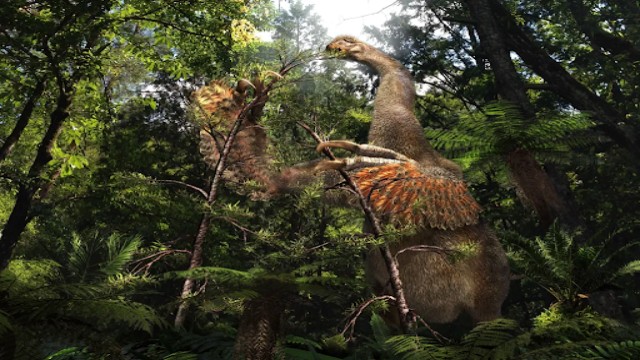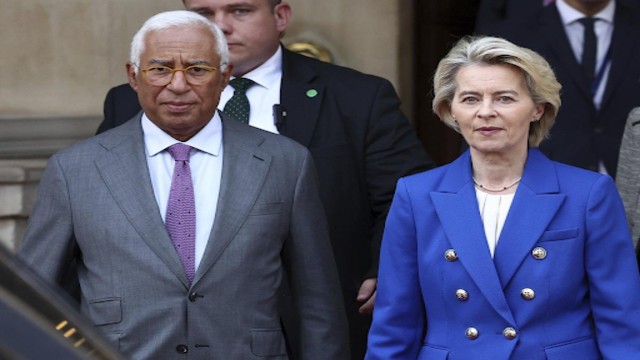
Duonychus tsogtbaatari had strong claws that helped it hold plants easily. BBC
Scientists have unearthed a rare dinosaur species in Mongolia’s Gobi Desert. Named Duonychus tsogtbaatari, this unique dinosaur belonged to a group called Therizinosaurs, which typically had three claws. However, this new species had only two.
The dinosaur was medium-sized, weighing around 260 kg. It had long, curved claws, which researchers believe helped it grasp vegetation effectively. The claws could also bend sharply, making it easier to hold onto plants or possibly use them as weapons.
The fossil was found in the Bayanshiree formation, a region dating back to the Late Cretaceous period, roughly 100 to 66 million years ago. The Gobi Desert is famous for being a rich source of dinosaur fossils, especially from the late dinosaur era.
Scientists estimate that the dinosaur weighed around 260 kilograms. BBC
Therizinosaurs were unusual dinosaurs. They were either herbivorous or omnivorous and roamed parts of Asia and North America during the Cretaceous period. The most famous member of this group, Therizinosaurus, was even featured in the movie Jurassic World Dominion. According to Dr. Darla Zelenitsky, a co-author of the study and associate professor at the University of Calgary, Therizinosaurs had an “awkward” appearance, making them easily recognizable.
The claws of Duonychus tsogtbaatari were nearly a foot long, larger than the bones they were attached to. This size difference made the claws more useful for grabbing or potentially defending against predators. The claws may have also been used for digging or display, similar to how modern birds use their feathers for attraction.
The dinosaur’s claws might have been powerful weapons. BBC
Interestingly, the two-fingered hands of this dinosaur evolved separately from other two-clawed theropods, like the well-known Tyrannosaurus rex. Despite the similarity in finger structure, these species were not closely related.
One of the most significant aspects of this discovery was the preserved keratinous sheath on the claws. This sheath, made of the same material as human fingernails, added strength and sharpness to the claws. It also helped the dinosaur dig, defend itself, or capture prey more efficiently.
This remarkable discovery offers new insights into the evolution of Therizinosaurs. The unique two-fingered design, combined with large, flexible claws, shows how dinosaurs adapted for survival. The fossil also highlights the Gobi Desert’s importance in preserving rare and diverse dinosaur species.















